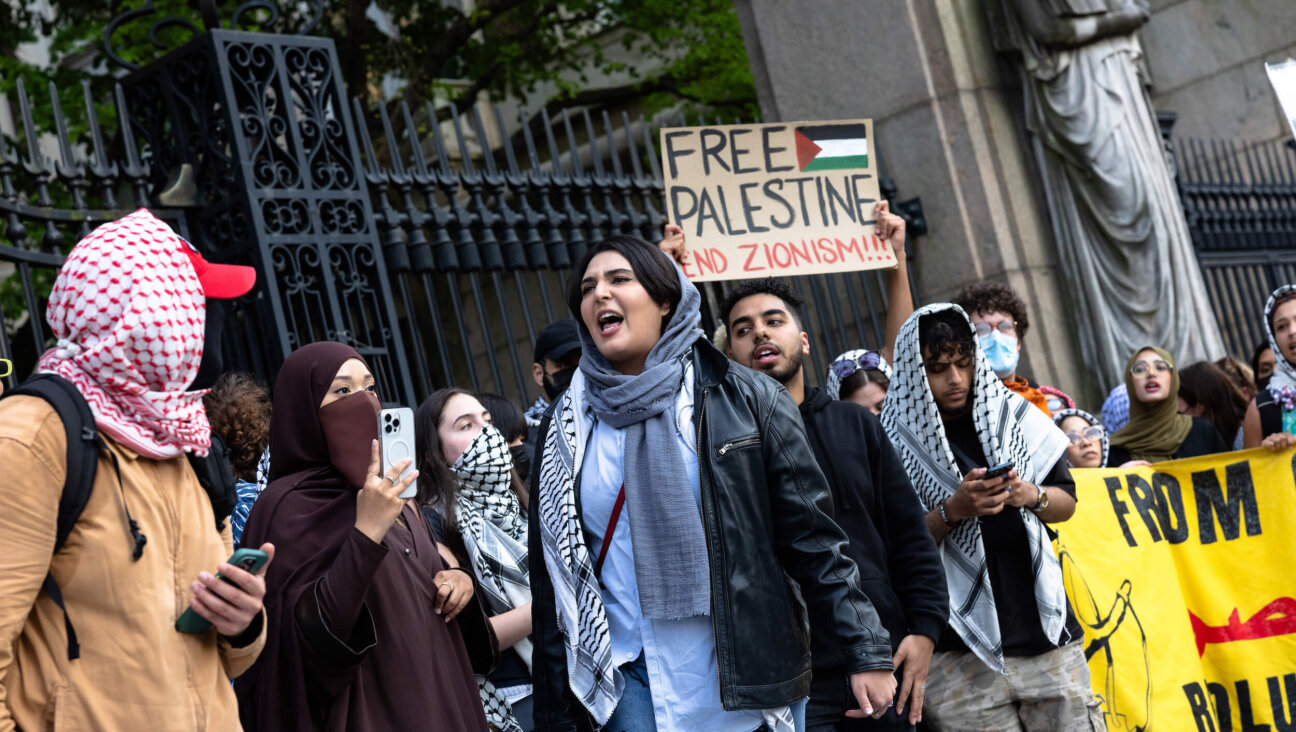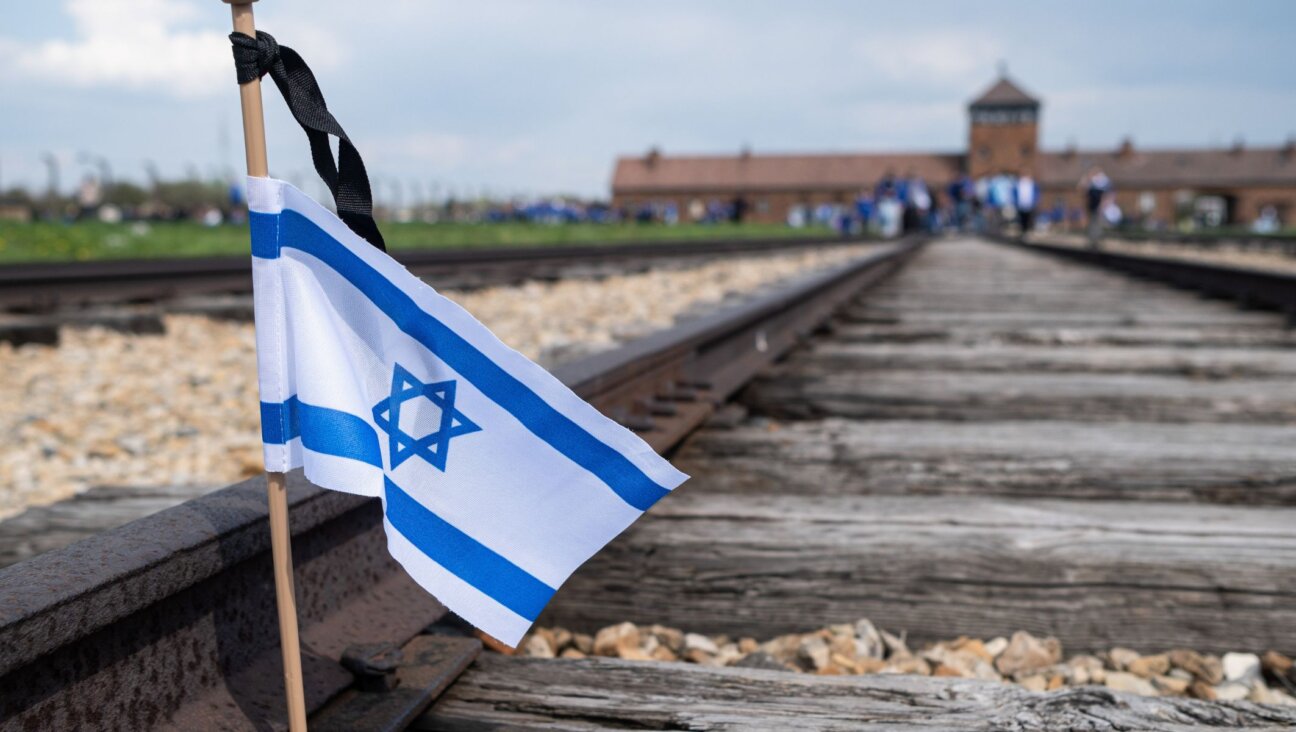How (and Why) We Saved Soviet Jewry
When They Come for Us, We?ll Be Gone: The Epic Struggle To Save Soviet Jewry
By Gal Beckerman
Houghton Mifflin Harcourt, 608 pages, $30
It is easy enough to understand why Gal Beckerman chose the somewhat melodramatic title, ?When They Come for Us, We?ll be Gone,? for his masterful and highly readable history of the Soviet Jewry movement.
The line, a lyric from an American song aimed at rallying support for the imprisoned Soviet Jewish activist Anatoly Shcharansky, evokes both the Holocaust and the Stalinist purges ? only this time with a happy ending. No longer passive victims, Jews take their fate into their own hands and prevail.
But the reality is that the two-decade movement to allow Soviet Jews to freely emigrate took place primarily in the prosaic Brezhnev era, when the Soviet Union, eager to pursue arms and trade deals with the West, used arrests, internal exile and imprisonment as tools of the last resort to keep its sprawling population under firm control.
The lack of a murderous foe in no way diminishes the bravery of the Jewish activists who challenged the Soviet authorities in the pursuit for their freedom. To the contrary, it makes their actions even more courageous.
Most could have lived out their lives in relative comfort, accepting a degree of educational and job discrimination and severe limitations on their ability to practice their religion freely (a restriction that was not particularly onerous for the majority of Soviet Jews, who were decidedly secular). But they chose not to, instead pitting themselves against an all-powerful state and a broader populace that viewed them as traitors.
The Jewish activists who led the movement inside the Soviet Union ? Shcharansky, Yosef Mendelevich, Ida Nudel, Vladimir Slepak, Dina Beilin and others ? are the heroes of this book. But they are not the only protagonists. Their protests and ensuing punishments would have been pointless were it not for a similarly motivated group of activists in America who spurred a global movement on behalf of Soviet Jewry.
And this is the larger theme of Beckerman?s book. The awakening of Jewish consciousness in the Soviet Union had a parallel in America. While American Jews had a history of activism on behalf of oppressed groups ? most prominently in the Civil Rights movement ? they had previously been reluctant to make the fate of the Jewish people their principal cause.
Indeed, as Beckerman documents, the campaign for Soviet Jewry exposed a rift within America?s Jewish community. Established leaders were concerned that an overly aggressive posture, which could threaten détente between the United States and the Soviet Union, would backfire. It could lead to greater repression of Soviet Jews and, they feared, resentment of Jews in America.
The opponents of this establishment caution ? many of them regionally based, like Louis Rosenblum of the Cleveland Council on Soviet Anti-Semitism ? were determined to avoid a repeat of the Jewish establishment?s inaction on behalf of European Jewry during World War II. They successfully thrust the fate of Soviet Jewry into the center of U.S.-Soviet relations, making progress on other fronts contingent on the granting of exit visas for Jews. That trade-off was formalized in the 1974 Jackson-Vanik amendment, which linked improved trade to freer Jewish emigration.
Beckerman, a journalist at the Forward, weaves together developments on both sides of the Iron Curtain into a seamless narrative that should appeal to lay readers. He interviewed many of the participants directly and drew from hundreds of oral histories of principal actors in the Soviet Jewry movement conducted two decades ago. The book also benefits from documents that would have been inaccessible prior to the end of the Cold War, such as the minutes of Politburo meetings in which decisions about arrests of Jewish dissidents were made.
The factional split within the American Jewish community is just one of the divisions that Beckerman documents in this honest and highly nuanced account. Soviet Jewish activists had their own split between the politiki ? who advocated for broader human rights and closely aligned themselves with the larger dissident movement ? and the kulturniki ? who wanted the movement to have a distinctly Jewish focus on religious freedom and Zionism.
And the two nations with the greatest interest in fostering Jewish emigration ? the United States and Israel ? found themselves at odds over whether Soviet Jews should be free to emigrate to the country of their choice. Israeli authorities had a powerful interest in building up the state?s Jewish population and were alarmed, as the 1970s progressed, that upward of 80 percent chose to go to America.
Israeli lobbying to close off the American route caused a strong backlash among the American activists. Beckerman quotes the author Irving Howe?s acid response: ?We didn?t campaign to ?let our people go? only to Israel. The central moral and humanitarian issue has been to get Jews out of the Soviet pesthole, regardless of where they want to settle.?
This conflict hounded the movement till its end and was only resolved after the fall of the Soviet Union, when America, concluding that Jews should no longer be viewed as political refugees, set a quota that ensured the vast majority of émigrés would go to Israel.
The Soviet Jewry movement took place largely during the terms of three American presidents ? Richard Nixon, Jimmy Carter and Ronald Reagan. Of the three, Reagan comes out the best by far. Nixon and his influential Secretary of State Henry Kissinger (who, Beckerman notes, was a ?paragon of Jewish accomplishment?) viewed the noisy campaign on behalf of Soviet Jewry as a threat to détente; they preferred quiet negotiation. Carter made human rights a central focus of his presidency, but was largely ineffectual in advancing the cause of Soviet Jews.
Reagan, on the other hand, was an unstinting supporter of the Jewish cause, but he also knew how to cut a deal when the moment was right. Reagan?s Secretary of State, George Shultz, was a particularly sympathetic figure who appeared to make a personal and emotional connection to the longtime Jewish refuseniks (so named because they had been refused permission to emigrate) who sacrificed the most on behalf of the movement.
In a touching scene early in Mikhail Gorbachev?s tenure, Shultz, a yarmulke on his head, dropped in on a Seder that the American ambassador in Moscow was hosting for leaders of the Jewish cause. He went around the table, seemingly knowing every refusenik by name and kneeling down at one point to give Vladimir and Masha Slepak photographs of grandchildren they had never met. When Gorbachev later upbraided him for spending his time only with a ?certain group? of atypically disgruntled Jews, Shultz volunteered that his retinue of staff and reporters would be happy to give up their seats on his plane and let him take all those unhappy Jews home with him.
In the end, of course, Reagan and Shultz had the good fortune to be dealing with a liberalizing Soviet leadership that was prepared to resolve the issue of Jewish emigration in order to focus on larger challenges. For all the victories and setbacks along the way, the struggle to free Soviet Jewry was resolved by larger forces of history, with the greatest numbers of émigrés leaving after the Soviet Union had ceased to exist.
However, the determinative role of the demise of the Soviet state should take nothing away from the Jewish activists who emerged from seemingly nowhere to challenge that state at the height of its power. And Beckerman tells their stories particularly well. The book opens with 16-year-old Yosef Mendelevich joining scores of other Jews in creating an unofficial memorial outside Riga at a neglected site where the Nazis had slaughtered 25,000 Latvian Jews ? a first step on a course that would lead to his own resistance and imprisonment.
It tells of Boris Kochubievsky, a radio engineer in a military factory outside Kiev who stood up at a factory meeting to protest when a local army officer compared the Israelis to the Nazis in their occupation of Arab lands during the Six Day War. That outburst set him on a course of activism that led to his arrest, trial and imprisonment for defaming the Soviet state.
It tells of Dina Beilin, who made it her business to maintain a written record of every refusenik?s name, address, profession and reason for refusal. And of tiny, bespectacled Ida Nudel, who tracked down every ?prisoner of Zion?s? place of detention, relatives, medical problems and birthdays, with the goal of establishing contact and seeking to improve their conditions.
In one of the more chilling episodes, Nudel and the Slepaks decided on the Soviet holiday of International Children?s Day to barricade themselves in their Moscow apartments and hang out banners declaring their desire to emigrate. As the KGB tried to rip down the banners from the balconies of neighboring apartments, crowds on the street cursed and jeered the Jewish activists. Eventually, Nudel and Vladimir Slepak were sentenced to internal exile.
And, of course, there was Shcharansky, the best known of the refuseniks and an utterly fearless and uncompromising figure, who spent nine years in prison for his activism. He and Mendelevich ended up in neighboring cells at Chistopol prison, communicating by draining the water from their toilet bowls with rags and then speaking through the pipes.
Even on the verge of being freed in a spy swap, Shcharansky (now an Israeli human-rights activist known as Natan Sharansky) refused to yield an iota of compliance to his captors. After being ordered by his KGB guards to walk in a straight line to a waiting black limousine at an airport in East Berlin, Shcharansky defiantly zigzagged his way to the car.
Those stories and more are the heart of this fine book. Beckerman summarizes the activists? achievements well: ?Living in a totalitarian state, these were people who decided, almost out of nowhere, to assert an ancient identity, turn themselves into pariahs, risk everything, and become living proof of man?s capacity for bravery ? all so they could simply be Jews.?
*Read three excerpts from ?When They Come for Us We?ll Be Gone,? beginning in the Forward?s October 1 issue. The first is here

I hope you appreciated this article. Before you go, I’d like to ask you to please support the Forward’s award-winning, nonprofit journalism during this critical time.
Now more than ever, American Jews need independent news they can trust, with reporting driven by truth, not ideology. We serve you, not any ideological agenda.
At a time when other newsrooms are closing or cutting back, the Forward has removed its paywall and invested additional resources to report on the ground from Israel and around the U.S. on the impact of the war, rising antisemitism and the protests on college campuses.
Readers like you make it all possible. Support our work by becoming a Forward Member and connect with our journalism and your community.
Make a gift of any size and become a Forward member today. You’ll support our mission to tell the American Jewish story fully and fairly.
— Rachel Fishman Feddersen, Publisher and CEO
Join our mission to tell the Jewish story fully and fairly.























